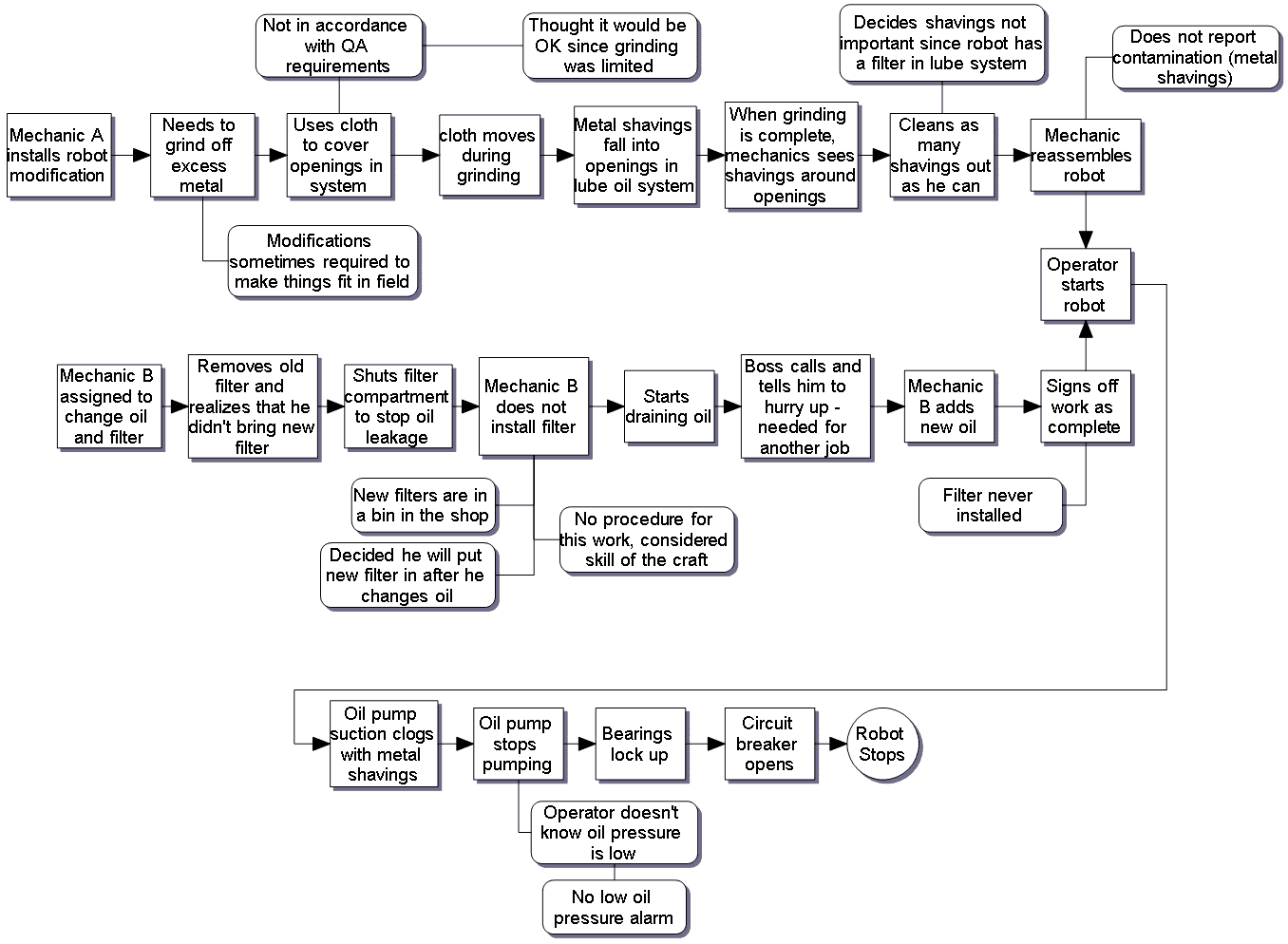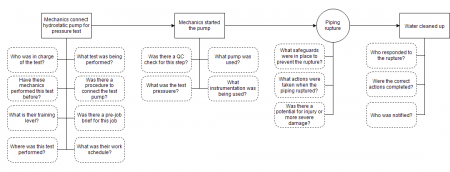Starting Your Investigation: The Power of the SnapCharT®

Beginning your investigation can sometimes be quite a challenge.
Deciding on who to talk to during the investigation, what documents you need, what questions you need to ask, etc., can lead to feeling slightly overwhelmed. As General Creighton Abrams said,
“When eating an elephant, take one bite at a time.”
In other words, you need to start with the first step of the investigation and then methodically work your way through to the end.
In TapRooT®, that first bite is the SnapCharT®.
The rest of your investigation will depend on the data you gather in that SnapCharT®, so it is critical that you begin in a simple, methodical manner.
Let’s say you get that initial notification phone call (usually at 3:00 am). You don’t get much information. Maybe all you know is, “Ken, we had a pipe rupture this morning during a hydrostatic test. Looks like the mechanics didn’t know what they were doing. They hooked up a test pump to the piping, started the pump, and almost immediately ruptured the piping. We’ve cleaned up the water, and no one was hurt. We need you to investigate this.” This is a pretty common initial report. There was not a lot of data, and some opinions were thrown in, and a request for answers. Without a structured process, most investigations would now start off with some interviews, asking pretty generic questions. It would be really nice if we could start off with some detailed, intelligent questions.
This is where the SnapCharT® comes in. Once you receive that initial phone call, build your SnapCharT® with the information you have. It honestly won’t have much data, but that’s OK; it’s only your starting point:

However, with this initial SnapCharT®, it is now easier to visualize what you already know and what you still need to know. For example, I’d have many questions about the pump, the mechanics themselves, recovery actions, etc. I’d use the Root Cause Tree® to help me figure out what questions to ask. I’d take each Event and ask, “What do I already know about this Event, and what questions do I have about it?” These would all be added to the SnapCharT®. It might look more like this:

Keep in mind that these questions were developed before I even went to the scene or questioned anybody about the facts. I still need to interview people, but I now have a much better set of questions to begin my investigations. Many more questions will arise as I ask this initial set of questions, but I’ll feel much better prepared to start talking to people about the issue.
The SnapCharT® is a simple yet effective tool to help the investigator get started with the investigation. It may seem like an inconsequential step, easy to dismiss. However, using the SnapCharT® as your very first tool before you start gathering data can greatly speed up the investigation. It allows you to start on the right path with a set of intelligent questions to ask. Once you have this moving, you’ll find the rest of the investigation falls into place in a logical, easy-to-follow format.
ALWAYS START WITH A SNAPCHART®!
LEARN MORE about TapRooT® essentials in our 2-day course (View schedule and register!)



